Your Cart is Empty

Shop By Vehicle:
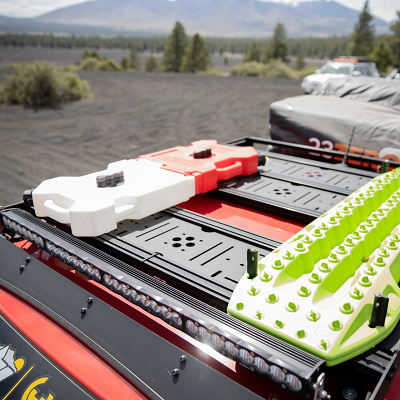
Roof Racks
Bed Racks
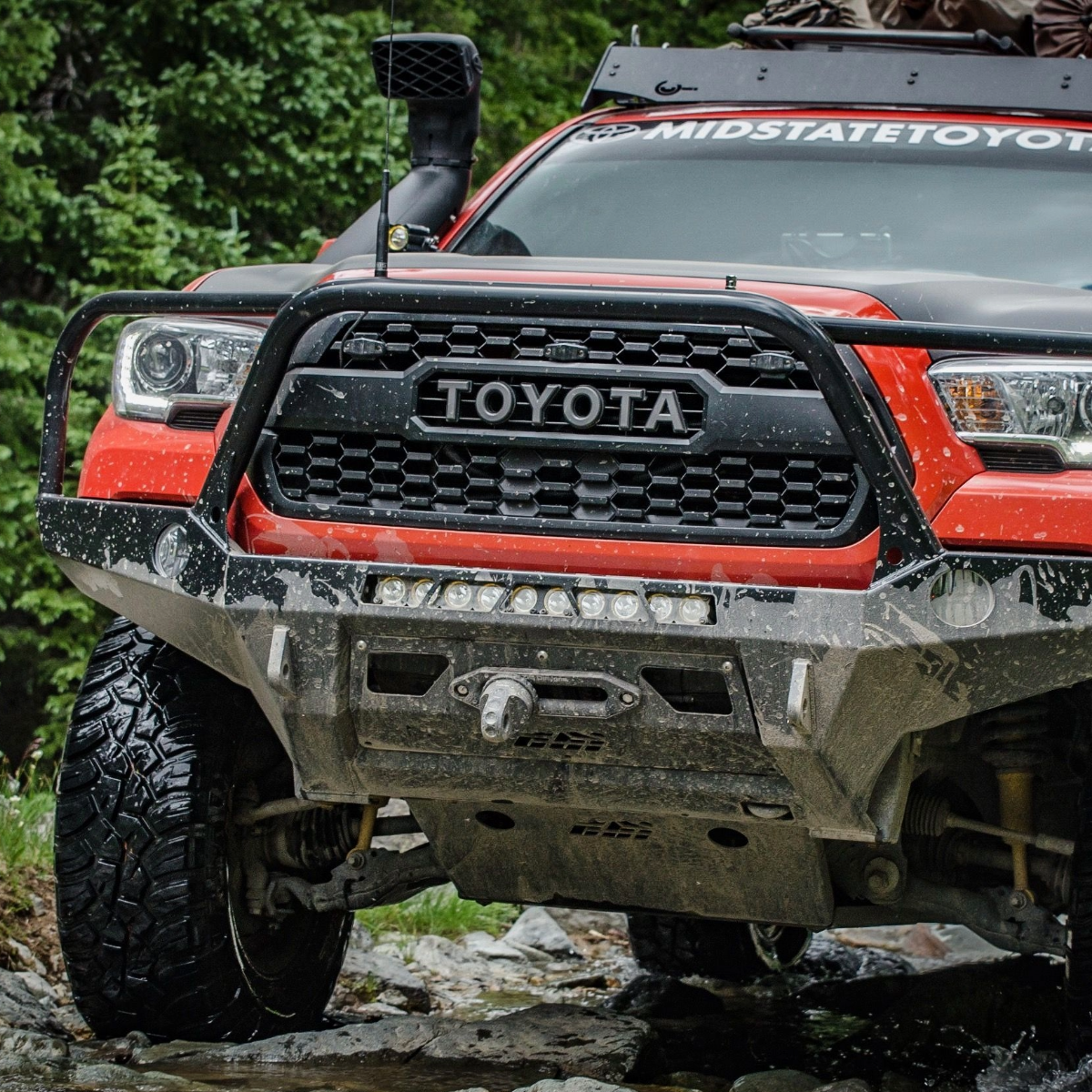
Front Bumpers
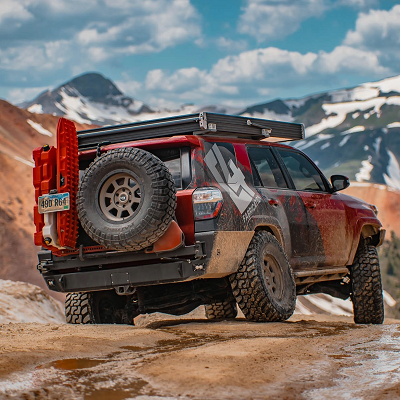
Rear Bumpers
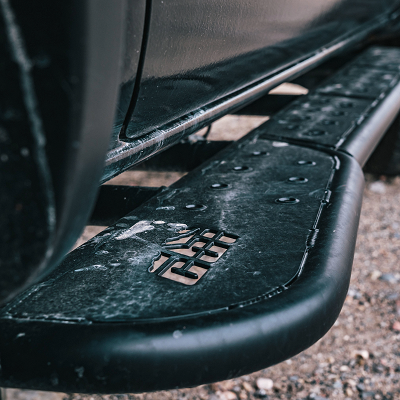
Rock Sliders
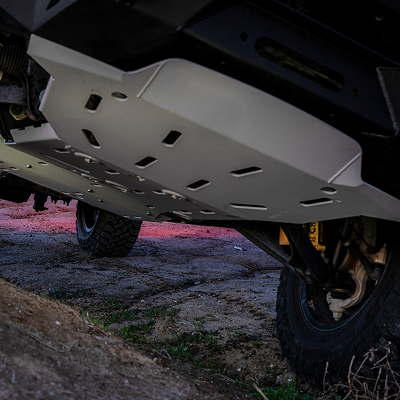
Skid Plates
June 20, 2025 9 min read

After building and testing multiple 4Runner long travel builds over the past decade, I can tell you that this modification represents one of the most significant upgrades you can make to your vehicle's off-road capability. But it's also one of the most complex and expensive.
Let me walk you through everything you need to know about long travel suspension systems based on my experience with these builds.
Long travel suspension fundamentally changes how your 4Runner handles rough terrain by allowing the wheels to move through a much greater range of motion, typically 14-18 inches of total travel compared to the stock 9-10 inches. This extended travel keeps your tires in contact with the ground over larger obstacles and allows you to maintain higher speeds through rough terrain without losing control.
The "long travel" designation comes from the increased distance between full compression and full extension of the suspension. Unlike a simple lift kit that raises the vehicle's ride height, a long travel kit actually relocates suspension mounting points and extends component lengths to achieve this additional wheel movement. This is why these systems require such extensive modification to the vehicle's structure.
Sure, the components of a long travel suspension kit don't look that different from a normal suspension lift kit. It's still shocks, springs, control arms, the whole package, but there are some differences in how long travel kit components work over normal components. Let's take a closer look.
Extended control arms form the foundation of any long-travel kit. Stock 4Runner control arms are designed for moderate off-road use and daily driving comfort. Long travel control arms are typically 4-6 inches longer than stock, which moves the wheel further outward and allows for increased suspension travel.
These longer control arms also change the vehicle's track width, giving you a wider stance that improves stability at higher speeds. However, this means you'll likely need fender modifications to accommodate the wider track and prevent tire contact.
The arms must handle significantly higher loads than stock components, which is why long-travel arms also feature heavy-duty construction with reinforced mounting points and upgraded bushings or heim joints.
When you extend the control arms, your stock axle shafts become too short to handle the increased wheel travel and wider track width. These extended axles and joints are engineered to handle the additional length while maintaining proper CV joint angles throughout the suspension's range of motion.
These extended axle shafts typically add 2-4 inches of length per side and feature upgraded CV joints designed for the increased stress. Some systems use custom axles with different spline counts or joint configurations to make them stronger.
This is something you don't want to skimp on. I've seen cheaper axles fail catastrophically during testing, yes, during TESTING when it's NEW.
Long travel systems typically use bypass shocks or remote reservoir coilovers to handle the increased wheel travel and provide better dampening throughout the extended range of motion. Popular options include King, Fox, and Icon shocks, specifically valved for long-travel applications.
Bypass shocks are particularly effective for long-travel builds because they provide different dampening characteristics at different points in the travel. This allows for comfortable highway driving while still controlling the suspension during aggressive off-road use.
The shock mounting points are often relocated and/or reinforced as part of the long travel conversion, which may require fabricating new shock hoops or towers. This is one area where professional installation makes more sense, as improper shock mounting can lead to component or frame failure.
Allowing more travel than you should will result in over-extending and damaging CV joints or other components. These straps must be precisely positioned to allow maximum travel while protecting the drivetrain.
On the other hand, bump stops control compression travel and prevent hard contact between suspension components. Long travel bump stops are typically much longer than stock units and may use progressive compression rates to provide smooth engagement as the suspension compresses.
Getting the limit strap and bump stop positioning right requires careful measurement and testing, another point to let the professionals do the installation and fine-tuning. Too restrictive and you're not using the full travel potential, too loose and you risk component damage.
Stock brake lines aren't long enough to accommodate the increased wheel travel of a long-travel setup. Extended brake lines maintain proper brake function throughout the suspension's range of motion without creating stress points that could lead to line failure, which is the last thing you'd want if you're crawling on steep cliffs.
Sway bar modifications or disconnects are often necessary because stock sway bars can limit articulation in a long-travel setup, especially on the rear end. Some builders remove the front sway bar entirely, while others use quick-disconnect systems that allow removal for off-road use.
Long travel suspension represents a significant investment. Here's what you can expect to pay for a quality build:
Long travel kit (arms, shocks, hardware): $3,000-$10,000
Extended axles (if not included): $700-$2,500
Professional installation and fabrication (shock hoops, reinforcements): $5,000-$10,000
Supporting modifications (brake lines, limit straps, bump stops): $500-$2,000
Body modifications (fender trimming/flares): $500-$2,000
When professionally installed with quality components, a build can easily cost $10,000-$15,000. This doesn't include additional modifications you might want like skid plates or differential upgrades.
More importantly this cost doesn't include bigger tires and wheels, which you will need; otherwise, it'll look like the truck skipped leg day:

These costs reflect quality components and proper installation. Cheaper alternatives exist, but I've seen too many budget long travel builds fail catastrophically to recommend cutting corners on this modification. As they say, "long travel" and "cheap" don't go together in a sentence.
Long travel kits are fairly expensive, which makes people think what even are the benefits of upgrading? Let's take a look.
The primary benefit of long travel suspension is dramatically improved off-road capability. With nearly double the wheel travel of stock suspension, you can maintain tire contact over much larger obstacles and traverse terrain that would bottom out a stock 4Runner.
This translates to higher sustainable speeds on rough trails and the ability to tackle more challenging terrain. Desert racing applications particularly benefit from more travel, allowing drivers to maintain 60+ mph speeds over terrain that would require much slower speeds with stock suspension.
Long travel kits typically provide 14-18 inches of total wheel travel compared to 9-10 inches stock. This additional travel improves traction by keeping tires in contact with the ground over larger obstacles and uneven terrain.
The increased articulation also reduces stress on the vehicle's chassis because the suspension absorbs impacts that would otherwise transfer directly to the frame. This can extend the life of other vehicle components and reduce fatigue during long off-road drives.
Extended control arms and bypass shocks provide better control over wheel movement, reducing the harsh impacts and jarring associated with stock suspension hitting its travel limits. The result is a more controlled, predictable ride over rough terrain.
This improved control allows for more aggressive driving techniques and reduces driver fatigue during long off-road adventures. The wider track width also improves stability, particularly important when running larger tires.
While not the primary goal, long travel builds often increase ground clearance through the wider stance and modified geometry. The extended control arms can provide additional clearance around critical components like differential housings and oil pans, which is extremely beneficial for off-road applications.
Long travel systems can be tuned for specific applications through shock valving, spring rates, and geometry adjustments. Desert racing setups prioritize high-speed stability and large impact absorption, while technical trail setups might emphasize low-speed control and maximum articulation.
This customization potential allows you to make adjustments for your specific driving style and terrain preferences.
Long travel suspension isn't right for every 4Runner owner. The modification significantly changes the vehicle's character and comes with important trade-offs.
Daily driving comfort typically suffers compared to stock suspension. The stiffer springs and different geometry required for long-travel performance can create a harsher ride on pavement. If your 4Runner sees significant highway use, consider whether this trade-off is acceptable.
Maintenance requirements increase substantially. Long travel components operate under higher stress levels and require more frequent inspection and service. Heim joints need regular lubrication, and the additional complexity means more potential failure points.
The modification is essentially irreversible without significant expense. Converting back to stock suspension would require replacing most of the modified components and potentially repairing welded areas.
Insurance and warranty implications should be considered. Extensive modifications like long travel suspension may affect coverage, and any remaining factory warranty will likely be voided.
If you made it this far, it's time to think about the best in the business, the reputable brands when it comes to long travel kits:
Dirt King's long travel kit offers excellent value with proven performance in desert racing applications. Their system uses extended control arms with quality heim joints and includes all necessary hardware for installation. The kit is designed to work with various shock options, giving you flexibility in choosing dampening characteristics.
What sets Dirt King apart is their attention to geometry optimization. Their extended arms maintain proper suspension angles throughout the travel range, reducing bind and improving component longevity. Some of their kits also include reinforcement plates for critical mounting points.

Camburg Engineering has deep roots in off-road racing and brings that experience to their 4Runner long travel systems. Their kits feature premium construction with TIG-welded joints and aircraft-grade materials. The geometry is optimized for both desert racing and technical trail use.
Camburg's systems often include innovative features like adjustable upper control arm mounts that allow fine-tuning of caster and camber settings. This adjustability helps optimize alignment for different tire sizes and driving styles.

Total Chaos offers one of the most comprehensive long travel systems available, with options ranging from mild trail setups to full race-spec builds. Their modular approach allows you to build the system incrementally, starting with basic components and adding race-specific features over time.
Their race long travel kits include features like replaceable heim joint sleeves and heavy-duty mounting hardware designed for the highest stress applications. The engineering reflects decades of off-road racing experience.

AccuTune specializes in suspension tuning and offers complete long-travel packages that include professionally valved shocks matched to the specific kit and intended use. Their approach emphasizes the complete system performance rather than just providing hardware.
Forget about figuring out what brands to mix and match on your setup, AccuTune bundles them all together for you, all ready for installation.
What makes AccuTune unique is their focus on shock tuning and system integration. They can customize shock valving for your specific weight, tire size, and driving style, ensuring optimal performance from the complete system.
After building and testing multiple long-travel 4Runners, several lessons stand out. First, the installation complexity cannot be overstated. This isn't a bolt-on modification, it requires precise fabrication work and welding skills.
Fine-tuning is another part. A long travel system with poorly valved shocks or incorrect spring rates can perform worse than stock suspension. Work with experienced shops that understand the specific requirements of your intended use.
The wider track width created by extended control arms requires careful consideration of tire and wheel selection. You'll likely need to modify fenders or add flares to prevent tire contact during compression travel.
Break-in period expectations should be realistic. Long travel systems typically require several hundred miles of varied driving to properly settle and reveal any issues that need addressing.
Long travel suspension represents the ultimate 4Runner off-road modification for serious enthusiasts willing to invest in maximum performance. The transformation in capability is dramatic, you'll be able to tackle terrain and maintain speeds that simply aren't possible with stock suspension.
However, this modification isn't for casual off-roaders or those who prioritize daily driving comfort. The investment is substantial, both in initial cost and ongoing maintenance requirements. The complexity means you'll need relationships with shops that understand these systems for proper service and tuning.
If you're committed to serious off-road adventures and have the budget for quality components and professional installation, long-travel suspension will transform your 4Runner into a genuine off-road weapon. Just understand what you're getting into before taking the plunge, this modification changes everything about how your vehicle drives, both on and off the pavement.
Can I install a long travel kit myself?
Long travel installation requires welding, fabrication skills, and specialized tools. Most kits require modifying frame mounting points and installing reinforcement plates. Unless you have professional-level fabrication experience, plan on professional installation.
Will long travel suspension affect my 4Runner's reliability?
Properly installed quality systems can be reliable, but maintenance requirements increase significantly. Components operate under higher stress and need more frequent inspection. Budget for increased maintenance costs and potential component replacement.
How much lift does a long travel kit provide?
Long travel kits typically provide 2-4 inches of lift, but this varies by specific kit and setup. The primary goal is increased wheel travel rather than ride height, so don't choose long travel purely for lift.
Can I run larger tires with a long travel setup?
Yes, most long travel systems accommodate 35-37 inch tires, and some can handle larger sizes with additional modifications. The extended control arms often provide better tire clearance than stock geometry.
What's the difference between long travel and a standard lift kit?
Standard lift kits raise the vehicle but don't increase wheel travel significantly. Long travel systems relocate suspension mounting points and extend component lengths to achieve much greater wheel movement, typically 4-8 inches more than stock.
Comments will be approved before showing up.
Sign up to get the latest on sales, new releases and more …